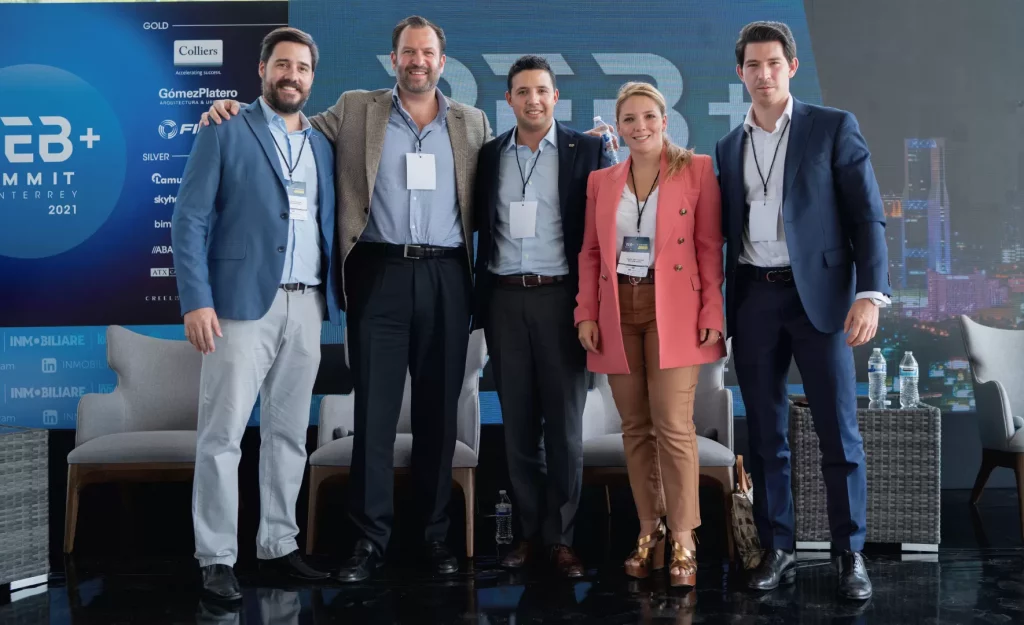Monterrey‘s industrial market is very dynamic and is the least affected sector. Apodaca, Escobedo, Santa Catarina, Pesquería or Salinas Victoria are just some of the corridors that show the high industrial value of the state. This was the main theme of the sixth panel.
Fernando Álvarez, consultant of Colliers began the presentation giving a preamble of the numbers that are handled in the regional industrial market.
Monterrey is the second largest market, surpassed only by Mexico City. It has a market size of 14 million square meters, with an availability rate of around 6 percent.
On this, Fernando remarked that the entity is in a healthy market, since more than 10% can be considered oversupply and below 5% is a low market.
“However, these numbers are constantly changing, because this market is very active,” he analyzed.
Regarding the registered absorption, at the end of the third quarter it was around 650 thousand square meters and it is expected to close the year with one million.
And as for the range of starting prices, considering classes A and B, it was $350 and $250 per square meter, with the lowest prices being in buildings over 15 years old, second generation, and the high ranges for new buildings.
To conclude his participation, Fernando added that Monterrey does not have a cluster that defines the metropolitan area, which is very positive, since it makes it dynamic and follows the needs of companies, whose main branches are in:
- Automotive
- Metal-mechanic
- Household goods
- Food and drinks
- Logistics and distribution
For Enrique Lavín, director of PGIM Real Estate, this is a very interesting and attractive panorama; Well, it added other factors such as the regionalization of supply chains and the individual entry of the T-MEC that favor the Monterrey market, which attracted international players looking for an attractive return and, therefore, more capital to the region.
“However, it is still a local market. We see that the CEDIS and the Afores are the ones that have promoted development and the ones that are willing to run the development risk”.
On the subject of energy, Enrique pointed out that it is going to impact and reconvert the industry. “We see that there is a renewed interest in class B inventories with all the conditions, permits and licenses to have benefits in the face of uncertainty. This year the industry is going to grow, it is said, 55 million square feet”.
José María Garza from GP Desarrollos also highlighted that there are few players in the entity and that the industrial market, without a doubt, is the fashion market.
He added that the dynamism that has been seen in the last 8 months is something that has never happened and what the developer must understand is where that dynamism comes from.
“We are seeing an increase in the sale of large plots of land, which will be a limitation in the medium or short term; as well as many expansions of clients already established here”.
For him, Mexico is well positioned, both because of the trade war between the United States and China, as well as because of the T-MEC and the consumerism of the American market.
“Covid reconfigured supply chains. Logistics costs have increased and the shortage of materials, such as steel or chips, although ironic, are favorable for the sector if there was a quick reaction”.
He affirmed that if a company stagnates in supplying with a single country, it will see greater problems and that to make your supply chain more efficient, you have to produce close to the market that consumes you.
For her part, María José Treviño, general director of Acclaim Energy, reported that companies want to reduce their carbon footprint, but without affecting the business.
This is because companies want to meet sustainability goals and do not care how much time they invest or how much it costs to achieve it.
He stressed that there are more than 1,000 companies with private energy supply, which can combine different schemes to give the consumer an advantage and that there is already technology to see consumption and measure the carbon footprint.
Finally, Daniel Pulido, general director of DarkStore, highlighted the importance of the “Last Mile”, which represents 50% of the logistics cost.
The last mile is the final process of an order to reach the consumer. This has become important due to the growing demand for e-commerce that we are experiencing.
We must think about how we operate and take advantage of retail. We have the inventory in the heart of the cities and it can be delivered efficiently and saving both expense and time.
“Before, to meet this demand we had industrial warehouses outside the city, that is, 15, 20 or even 40 kilometers from the consumer, with the Dark Store modality, any operator can deliver faster, cheaper and more efficiently.”
By Juan Rangel
This is an excerpt from the text REB+SUMMIT Monterrey highlights the importance of sustainable, vertical and technological cities, from the 129th edition .

